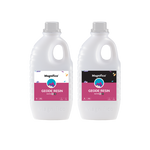Introduction:
An epoxy resin called slow-curing resin, also commonly known as deep-pour resin, can cure slowly. Typically, it can be made from two elements: a hardener and resin. These components mix to produce a mixture that grows stronger because of a chemical reaction.
For deep casting applications, a slower exothermic reaction becomes practicable via the combination of slow-curing resin.
Slow-Curing Resin: What Is This?
Deep-casting projects capitalise hugely from slow-curing resin, which takes longer to become solid.
For Deep Casting, Why Use It?
- Fewer Heat: As it cures, it generates less heat, avoiding cracks and dark spots.
- Extra Time: You don't need to rush when integrating and sprinkling.
- Visible Finish: This kind of resin runs really clear, which makes it perfect for projects where you want one to be capable of seeing through it.
- Less Bubbles: A smoother project is a consequence of a lower temperature and generating less bubbles.
Now, we are going to check How to Use Slow-Curing Resin.
- Apply in Levels: To avoid too much heat formation in heavily submerged projects, pour the resin into layers then allow for each layer to solidify before applying the next.
- Reliable Conditions: To ensure that the resin dries out properly, work in a location with stable humidity and temperature.
- Merge Well: To stay away from any soft or sticky parts, carefully follow the mixing guidelines and mix each thing well.
- Reduce Bubbles: Before pouring, remove any visible bubbles with a vacuum or pressure cooker to remove them.
Overall,
Slow-curing resin improves the cure time, minimises the possibility of cracks and yellowing, and offers a smoother, clearer final product when utilised in deep casting. You'll have a nice formation if you simply pay careful attention to the steps!















